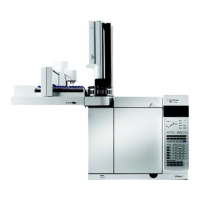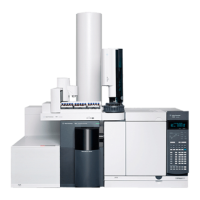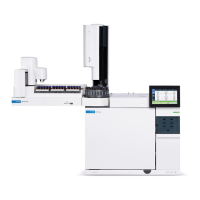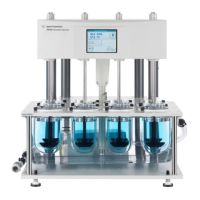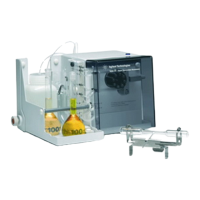Inlets 3
Advanced Operation Manual 117
7
Press [Prep Run] (see “Pre Run and Prep Run” on page 40)
before manually injecting a sample.
If the column is not defined
1 Set up the parameters as described for the defined
column case.
2 Set Total fl o w greater than the column flow plus the
septum purge flow to guarantee adequate column flow.
To develop a PTV method that uses large volume injection
This topic provides a recommended way to change from a
splitless injection using a split/splitless inlet to a solvent
vent mode injection using a programmable temperature
vaporization inlet (PTV). It applies mainly to large volume
injections (LVI) using a PTV, but the concepts can apply to
general PTV use. This topic does not consider all items that
can impact an analysis, for example the liner, solvent,
analyte boiling points, or polarity. This topic also assumes
knowledge of your data system—when to save a method, how
to start a run, how to set up a single run, etc.
The main advantage of the PTV inlet's solvent vent mode is
that you can inject slowly into the inlet, allowing large
amounts of solvent to evaporate in the liner (not in the split
vent line). This concentrates the analytes prior to injection.
It requires an injector with variable speed injections, a
“large” syringe, and knowledge of the sample and the
solvent.
When developing a solvent vent method, the goal is to
determine the injection rates and temperatures needed to
evaporate the solvent at the rate it enters the inlet. The
development technique is to gradually scale up to an
injection amount that produces a useful response. The most
significant parameters are:
Tempera ture Hold the inlet temperature at or slightly below
the solvent boiling point until after all the sample has been
injected. This is important so that you do not boil away
more volatile analytes, or boil away the solvent in the needle
and trap your analytes there. An additional point to consider
is that the boiling point of the earliest eluting analyte should
be 100 °C less than the boiling point of the solvent.

